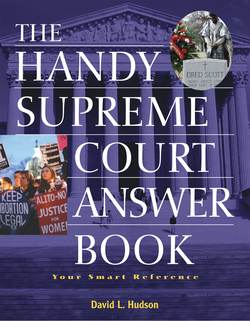Читать книгу The Handy Supreme Court Answer Book - David L Hudson - Страница 169
Why did these chief justices leave the Court?
ОглавлениеJay left the Court to become governor of New York, a position he coveted more than the chief justice of the Supreme Court. The Court in those early days was not considered a top position, as many early justices left for state positions or state judgeships.
Rutledge first served as one of the Court’s original six associate justices, though he never actually heard a case on the Court due to illness. Rutledge did hear some cases in his capacity of “riding circuit,” as the Judiciary Act of 1789 required Supreme Court justices to serve as circuit court judges. Rutledge left the Court as an associate justice for what he considered a better position—chief justice of the South Carolina Supreme Court.
In July 1795, President Washington appointed Rutledge to the position of chief justice while Congress was in recess (a so-called recess appointment). However, Rutledge had to leave the Court after the U.S. Senate failed to confirm him by a vote of 14–10. Many senators opposed Rutledge’s nomination because of political reasons, mainly his opposition to the Jay Treaty, named after the Court’s first chief justice, John Jay. President Washington enlisted Jay, while he was still chief justice, to negotiate with the British over several issues that were causing conflict between the two nations. Many Americans were upset with the British for their capture and seizure of American ships. Many believed that Jay was not forceful enough in his negotiations and did not obtain enough concessions from the British for their unlawful behavior. Rutledge called the Jay Treaty a “prostitution of the dearest rights of free men.” This did not sit well with several members of the U.S. Senate, who denied him the chief justice position. Rutledge did not take the rejection well, as he apparently tried to drown himself.
Ellsworth left the position as chief justice because of poor health.
Oliver Ellsworth, the nation’s third U.S. Supreme Court chief justice. Hulton Archive/Getty Images.
John Rutledge, the nation’s second U.S. Supreme Court chief justice. Rutledge was a recess appointment who served for only five months as chief justice before the U.S. Senate rejected him, 14–10. Hulton Archive/Getty Images.
